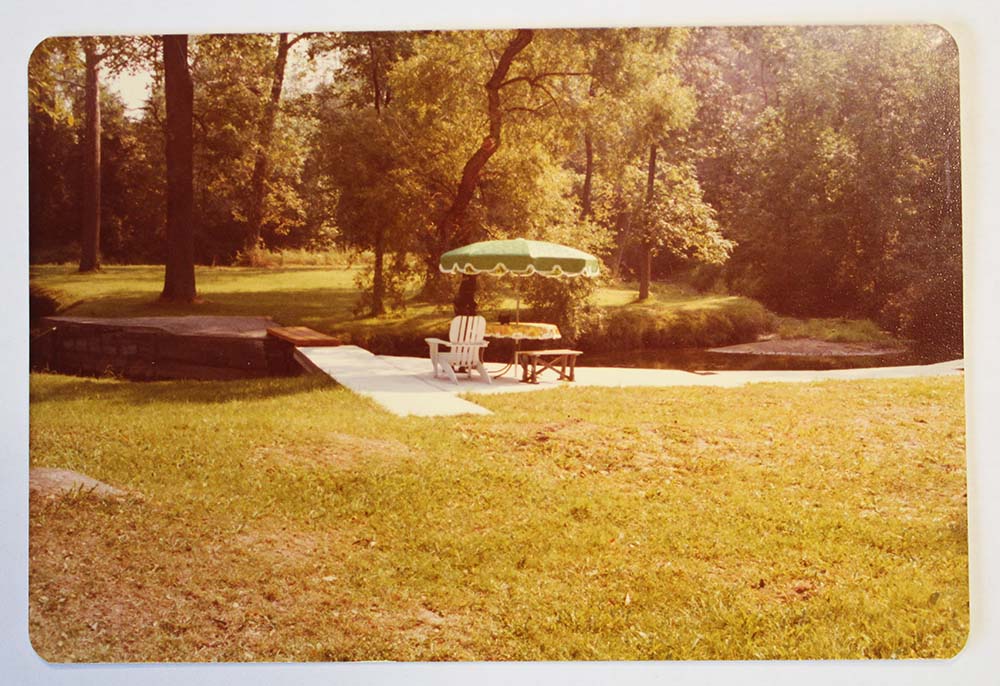On September 18, we marked our 45th anniversary as a regional conservation partner at a lively community celebration that also featured a land acquisition announcement, the Lapham Addition to Reichert Nature Preserve.
A very brief history of Legacy’s first 45 years

We marked out 45th anniversary by announcing an addition to Reichert Nature Preserve, which features several beautiful ponds. Photo by Paul Morrison.
With the help of many supporters over our 45-year history, we have protected more than 8,000 acres of land that safeguards water quality, preserves working farms, and conserves natural lands for recreation and wildlife habitat.
While much of the land we have protected from development remains in private ownership, some of the most well-known of the land trust’s successes are owned and/or managed by regional partners. Among these are: Osborne Mill Riverlands Preserve, protected in 1980; Bandemer Park, protected in 1984; Bird Hills Nature Area addition, protected in 1990; Black Pond Woods Nature Area, protected in 1991; the site of Ann Arbor Community Farm, protected in 2004; Riverbend Preserve addition, protected in 2008; and Watkins Lake State Park and County Preserve, protected just within the past year.
We also protect land through outright acquisition of land, often donated, that Legacy owns and manages as preserves. One of these preserves—Reichert Nature Preserve—has just expanded thanks to Legacy’s newest acquisition.
The newest acquisition
At our 45th anniversary celebration, we announced a significant addition to Reichert Nature Preserve, achieved as part of a set of three transactions resulting in the permanent conservation of 53 acres. Seventeen of those acres, called “Reichert Nature Preserve – Lapham Addition,” will provide upland trails across Portage Creek from the original Reichert Nature Preserve.
Located near the Pinckney Recreation Area, Reichert Nature Preserve features rolling wooded terrain, two small ponds, and frontage along Little Portage Lake and Portage Creek. It was protected through a donation by the late Dr. Rudy Reichert, Jr. of Ann Arbor.

Reichert Nature Preserve
“Through this project, upland and wetland habitat directly on Portage Creek is preserved,” said Robin Burke, Land Protection Manager. “This will keep the creek connected to its floodplain, maintain habitat for a wide variety of plant and animal species, and prevent uses that could contribute to erosion and water quality problems in the future.”
This acquisition will also allow public access improvements to Reichert Nature Preserve. “Our long-term plans for enhancement include a parking lot, restrooms, and a footbridge over Portage Creek,” said Dana Wright, Land Stewardship Manager.
The addition to Reichert Nature Preserve was achieved with the help of a conservation buyer, who will retain ownership of 36 acres—now protected with a conservation easement—that were part of the original property sale. “A conservation buyer is a committed community member who wants to own conserved land,” explained Executive Director Doug Koop, who made the acquisition announcement. “This individual made the project possible because it meant Legacy could permanently conserve 36 acres without having to fund an outright purchase.”

Part of the newly-protected land neighboring Reichert Nature Preserve is where the Lapham family and friends spent much of their summers swimming, fishing, picnicking, and otherwise enjoying the beautiful natural setting. Photo courtesy of Sandra Brinkman.
Koop elaborated, “By purchasing a property that was for sale, but working with Legacy during the process of the acquisition, the conservation buyer involvement allowed us to protect the property in a time frame needed by the seller. If we had had to wait to secure more funding to purchase the entire 53 acres, the seller’s need to complete a sale could have meant a sale to someone who would not preserve the land.”
The property was in the sellers’ family for a long time. Sisters and third-generation owners Sandra Brinkman and Jeannine Thomas reported that their grandfather bought the property circa 1916. It served as the site of annual family reunions filled with swimming, fishing, canoeing, and picnics. Sandra said, “We’re just thrilled it’s going to stay as it is.” It will be referred to as Reichert Nature Preserve – Lapham Addition.
Personalized and productive partnerships like the ones formed to achieve this acquisition are the hallmark of Legacy’s work. With 45 years of experience, we are well-positioned to continue protecting southern Michigan’s quality of place: the fresh waters, working farms, wildlife habitat, and recreation areas that make this a desirable place to live or visit.

 RSS Feed
RSS Feed